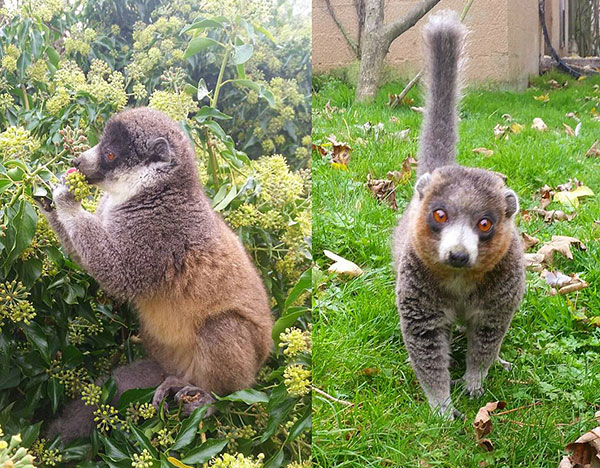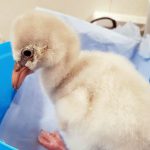Mongoose Lemurs’ Birthdays

Flamingo Land is celebrating our adult Mongoose Lemurs’ Birthdays. Geoffrey and Geraldine share the same birthday on April 10th and are both 19 years old. Geoffrey was born at Parc Zoologique et Botanique, Mulhouse, France and Geraldine was born at Banham Zoo, Norfolk, UK. The pair were first introduced to each other at Colchester Zoo in 2000. The young pair then moved to Edinburgh Zoo together in 2009 and joined us at Flamingo Land in 2014.
The male, Geoffrey, is distinguishable from the female, Geraldine, as he has a brown neck and she has a white neck. The pair have a son Benji who was born here at Flamingo Land in 2015. Geraldine ran out of milk during the rearing of Benji so the keepers had to assist with feeding. As a consequence Benji is one of the friendliest lemurs on-site, though sometimes he is too friendly as he wants to say hello to everyone.
All lemurs are native to Madagascar and this species is found in the forests in the North-West. Their diet consists of mainly fruits, flowers and nectar, but they sometimes eat insects too. The behaviour of these lemurs depends on the season. During the wet season they tend to be more active during the day time and in the dry season are active during the night. Mongoose Lemur tend to live in small groups made up of one male, one female and their young offspring. This is exactly what we have at Flamingo Land. A breeding pair would usually just have one young at a time and it would be born towards the end of summer or early autumn. Once they reach about three years old they leave the group to go and find a breeding partner.
Lemurs can be quite vocal animals and rely heavily on scent marking to claim their territory. They are excellent at climbing and jumping through the trees. They are not able to grasp branches with their long tail, but instead use it for balance to ensure they don’t fall from the trees. Their hands and fingers are extremely mobile so they are able to hold food and grab branches when climbing.
Unfortunately, the mongoose lemur population is in decline due to the destruction of their habitat which is cleared for pasture and charcoal. Lemur are also sometimes hunted for food or captured to be sold in the pet trade. It is illegal to kill lemurs, however many local people ignore the law or are unaware of it so hunting continues.
Our family of mongoose lemur can regularly be seen in the centre of our lemur exhibit at Flamingo Land and you may even see Geraldine and Geoffrey celebrating their birthday on your next visit.


